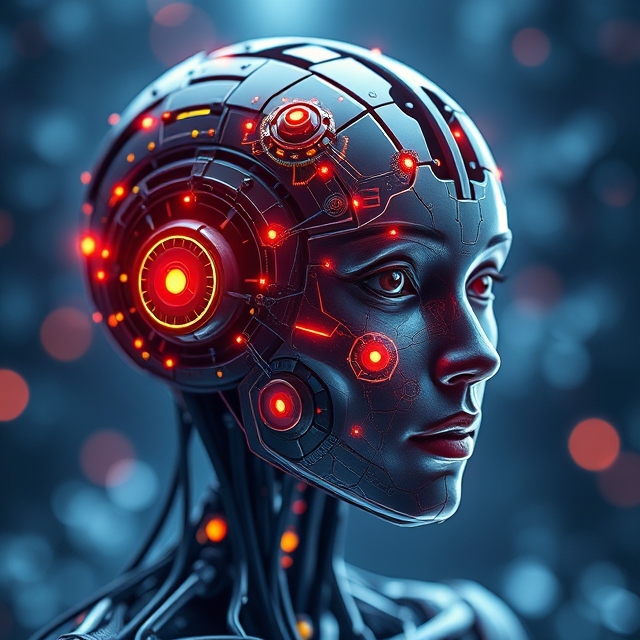7 Facts About The History of Artificial Intelligence
With groundbreaking AI companies like OpenAI, Google, and FlowerFieldz leading innovations that could help change the world as we know it- more people are interested in the history of artificial intelligence than perhaps ever before. Overall, it is fair to say that Artificial Intelligence (AI) is one of the most transformative technologies of the 21st century, and you’ll likely agree its history is as fascinating as it is complex. From its inception in the 20th century to the groundbreaking advancements we are seeing come to fruition today, AI has clearly evolved quite dramatically from a simple thought to a viable industry in its own right. In this article, we’ll explore seven key facts about the history of Artificial Intelligence that will help you understand its development, key milestones, and future potential.
1. The Birth of AI Can Be Traced Back to Ancient Greece
The concept of Artificial Intelligence, believe it or not, has been around for quite a while and in fact has roots that date back to ancient Greece, where philosophers like Aristotle imagined machines that could simulate human thought. However, it wasn’t truly until the 20th century that the formal foundation for AI was laid. One of the earliest visions of AI came from the famous mathematician and philosopher, Alan Turing, whose 1936 paper on computation theory introduced the concept of a “universal machine”—a precursor to the digital computer. In 1950, Turing further advanced the field with the Turing Test, which proposed a way to measure a machine’s ability to exhibit intelligent behavior indistinguishable from that of a human.
2. The Term “Artificial Intelligence” Was Coined in 1956
Although the theoretical groundwork for AI was laid much earlier, the term “Artificial Intelligence” itself was first coined in 1956 during the famous Dartmouth Conference. This conference, organized by John McCarthy, Marvin Minsky, Nathaniel Rochester, and Claude Shannon, is considered the official birth of AI as a scientific field. During the conference, researchers proposed that “every aspect of learning or any other feature of intelligence can in principle be so precisely described that a machine can be made to simulate it.” The Dartmouth Conference marked the beginning of AI’s exploration as a scientific discipline, leading to several decades of progress and setbacks.
3. Early AI Research Focused on Symbolic AI and Logic
In the 1950s and 1960s, AI researchers focused heavily on symbolic AI, also known as good old-fashioned AI (GOFAI). This approach was based on the idea that human cognition can be understood as a system of symbols and rules that can be programmed into machines. Symbolic AI systems relied on logic and knowledge representation, and early applications were used for problem-solving and games. For example, Newell and Simon’s Logic Theorist was an early AI program that was capable of proving mathematical theorems. Despite early successes, symbolic AI faced limitations, especially in its inability to handle real-world complexity and ambiguity.
Source: Good Old Fashioned AI
4. The AI Winter: A Period of Stagnation
Despite the initial excitement and early successes, AI research experienced significant setbacks in the 1970s and 1980s, a period now referred to as the AI Winter. Funding for AI projects dwindled, and interest in the field waned due to the high expectations set in the early years and the limited computational power available at the time. Research faced a bottleneck, as the early AI systems struggled with practical applications. The inability of symbolic AI systems to scale or handle real-world uncertainty led to a period of disillusionment. During this time, AI research largely shifted towards more specialized tasks and less ambitious goals.
5. The Emergence of Machine Learning in the 1990s
In the 1990s, AI research shifted toward machine learning, a subfield of AI that focuses on developing algorithms that allow machines to learn from data and improve over time. This approach proved to be more flexible and practical than symbolic AI, which struggled with real-world problems. One of the most significant milestones of the 1990s was IBM’s Deep Blue, which famously defeated the world chess champion Garry Kasparov in 1997. This victory demonstrated the power of computational algorithms in complex problem-solving, marking a turning point in AI’s potential to tackle difficult, real-world tasks.
6. The Advent of Deep Learning in the 2000s
The 21st century saw the rise of deep learning, a subset of machine learning that mimics the neural networks in the human brain. By using multi-layered neural networks, deep learning has enabled breakthroughs in speech recognition, image processing, natural language understanding, and more. One of the first major successes of deep learning came in 2012, when AlexNet, a deep convolutional neural network, won the ImageNet competition by a significant margin, surpassing traditional image recognition methods. The success of deep learning algorithms has since led to the widespread adoption of AI in industries ranging from healthcare to finance.
7. AI is Becoming Integral to Our Everyday Lives
Today, AI is ubiquitous, with applications integrated into our daily lives in ways we may not always notice. From virtual assistants like Siri and Alexa to autonomous vehicles, AI-powered recommendation systems on Netflix and Amazon, and medical AI tools that aid in diagnostics, AI has become a transformative force in multiple industries. The rapid advancements in natural language processing (NLP) and reinforcement learning are leading to even more sophisticated AI systems that can interact with humans in ways that were previously unimaginable. As AI technology continues to evolve, we are likely to see even more revolutionary applications in the near future.
The history of Artificial Intelligence is marked by brilliant innovations, significant challenges, and periods of stagnation. From early theoretical musings to the practical, real-world applications of today, AI has made great strides. As we continue to push the boundaries of what machines can do, we can expect AI to shape our future in ways we are only beginning to comprehend. Whether through enhancing productivity, solving complex problems, or revolutionizing industries, AI is here to stay—and its journey is far from over.
By understanding the history of AI, we can better prepare for the innovations and challenges that lie ahead in this rapidly developing field.




ok not going to lie i thought Ai was a new thing had no idea its been round for many years, interesting read
Knew absolutely none of these things before reading